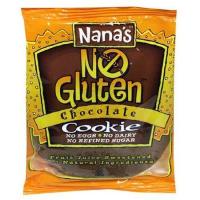By: Cindy Moustafa
Cindy Moustafa, B.S., A.F.A.A is finishing her Master’s degree in Nutrition. After working in marketing, she decided to pursue her passion for nutrition. Cindy has experience helping others to lose weight and get healthy, including children. She helped build an after-school weight loss program for children and also taught the classes. Cindy uses her knowledge and passion to drive others. For nutrition consultations or additional questions, please contact her at CinnM@hotmail.com.
Recently, while in JFK airport, I noticed that there was an entire section in the food terminal dedicated to gluten-free products. I was both surprised and excited, being that I have just started eating a gluten-free diet. Some of the food choices were great and included Kind bars and hummus. Other foods were just junk food with the attractive “Gluten-Free” label on the front, giving the impression that a gluten-free cookie is somehow healthier than a regular cookie. Gluten has been getting a lot of buzz lately, and the public seems to be overwhelmed with misleading facts about the protein. Read on to get the real facts about gluten and if you should really be on a gluten-free diet.
What the heck is Gluten? People will buy a product stamped “Gluten-Free” without having an idea as to what gluten even is. But they know they heard it on the Dr. Oz show and someone, somewhere said to stay away from it. Gluten is simply the protein found in wheat, barley and rye. Oats are debated by some to contain gluten as well. So foods such as breads and pasta that are made with wheat flour (white, whole-wheat or multigrain) contain gluten. Also, many companies use gluten in their processed foods to help bind the ingredients together, so less obvious products such as Ketchup or tomato sauce may contain gluten as well.
 |
| Still a Cookie! |
Why is Gluten bad for you? This is a controversial question because going gluten-free isn’t right for everyone. Many people today experience gluten sensitivities, which is akin to lactose intolerance. It’s believed by experts that this sensitivity has arisen from the overexposure to gluten from processed foods and a heavy carbohydrate dependency. In cases of intolerance, the body cannot digest gluten completely, so the person eating it can suffer from bloating, diarrhea, constipation, cramping and an array of symptoms (over 250 listed). Many people are misdiagnosed with IBS, when the real culprit is a food sensitivity. This is not to be confused Celiac Disease,an autoimmune disorder, in which the body attacks gluten and damages the intestine lining. As a result these individuals suffer from malnutrition and can experience life-threatening consequences if they eat something slightly contaminated with gluten. Gluten-free diets are also being associated with thyroid disease, autism and other disorders. It’s believed that those suffering from these ailments should avoid gluten because their body attacks it and makes their condition worse, so if you fall under this category it’s worth trying to go gluten-free. A last point, is that gluten-free foods are typically whole, natural foods so anyone can benefit from going gluten-free a few times a week.
I’m Gluten-free…now what? The best way to tackle a gluten-free diet is to follow the advice give by nutritionists. Make all your foods whole, natural foods and avoid processed junk. A gluten-free cookie, as mentioned earlier, is still a cookie. Just keep a clean diet and you’ll find that being gluten-free isn’t as difficult as it seems. It gives you a chance to be creative in the kitchen! Below is a list of foods to focus on when going gluten-free:
- Sweet Potatoes (any potato is GF)
- Brown Rice
- Gluten-Free Pastas and Breads
- Quinoa
- Farro
- Buckwheat
- Vegetables for adequate fiber and vitamins
- Fruits
- Protein powders
- Legumes/Beans including hummus
- Amaranth flour
- Arrowroot starch
- Coconut flour
- Corn (anything corn-based)
- Sorghum flour
- Soy flour
- Tapioca starch
- Teff flour
- Xantham gum (serves as a binder in absence of gluten)
With the growing awareness of gluten sensitivities, there are many options today that there weren’t a few years ago. Breads and pastas taste just like the original. Try different brands to see what you like, or of course, bake it yourself!
Cindy Moustafa
Personal Trainer & Nutritionist


















0 Comments